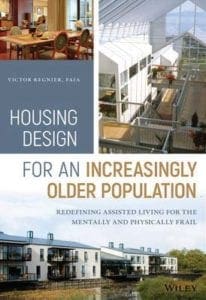
Victor Regnier’s “Housing Design for an Increasingly Older Population: Redefining Assisted Living for the Mentally and Physically Frail” (John Wiley & Sons) offers relevant aging research and examples of more than 20 settings that are getting it right.
When USC Architecture Professor Victor Regnier FAIA set out to write a textbook for people who build and manage housing projects for the elderly, it turned into something more. Regnier, also a professor of gerontology at the USC Leonard Davis School, combined his areas of expertise to create a road map for how to design the kinds of living environments that can help sustain, and even improve, quality of life for older adults, especially those who are frail or have cognitive impairments.
“As our aging population has grown in size and longevity, it is clear that we need to carefully and quickly find better solutions to help everyone stay independent,” says Regnier.
Regnier writes about the Apartment for Life model in Northern Europe, which houses people from ages 60 to over 100 in a residential setting that encourages independence, supports community and provides health and personal care services when they are needed. In the U.S., he cites the growing sharing economy, with co-housing and on-demand service providers, such as Uber and Lyft, as providing potential ways for people to stay in their communities longer.
Beyond buildings, the professor provides lessons for a better future. “We need to commit more resources, demand better affordable accommodations and raise our expectations for providing care in humanistic ways,” says Regnier.





